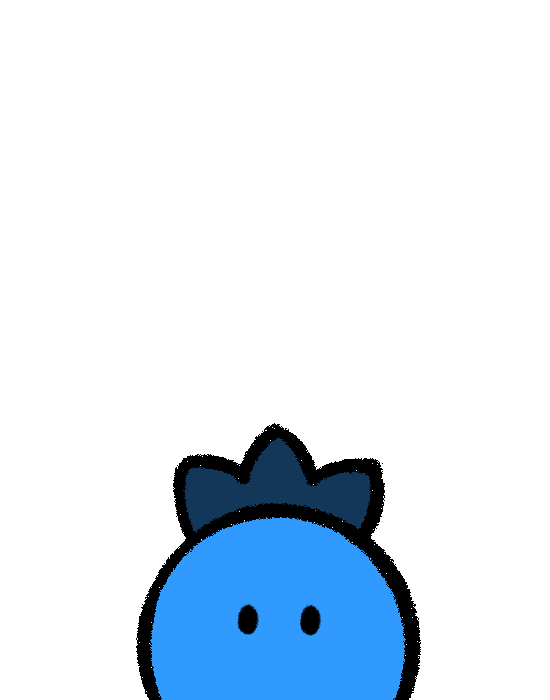

Businesses make products to reach business goals
You can't discuss UX research, without contextualizing where it exists: inside and among businesses.
Businesses build products and services. A product is a purchasable item that you buy so you can use it to reach a goal. A service is similar but you're buying utility or having someone/something do something for you.
Keep in mind that this "someone" could be an algorithm understanding your behaviors and interests to offer a personalized UX.
For an example, you could go to a store and buy a new dishwasher (a physical product). To get to the store, you might use a ride-sharing app (a service). Using the app, you’re not buying the car itself but the utility of getting a ride quickly from the driver and their car.
In the Fruitful library, services are also referred to as products for easier reading.
Business build products and services for specific groups of people who have similar goals. Businesses can't - currently - build a perfectly individualized product at scale so they focus on building some products that accomplish some goals for some group of people. But that doesn't mean building something for a handful of people. Some goals are sought after by millions of people from all over the world.
To reach all these people, businesses also want to to build scalable products and services. Scalable means more and more people are able to enjoy and use these products and services without a drop in quality or detail. In some businesses, the network effect can make the product or service better for everyone as it scales.
To stay focused, businesses set different goals when building those products for those people. Some goals are short-term and in the immediate future ("increase book sign-ups by 100 people by next week") while others set the vision or direction for the business ("remove 100 million metric tons of C02 emissions by 2030").
To reach short and long-term goals, businesses are constantly making decisions. Some result in immediate, palpable success. Other decisions don't prove to be bad until long after the damage is done.
Based on what industry the business is in and how they make money, feedback or the consequences of those decisions can come in many different ways. Revenue, ratings and reviews, support costs, engagement. Commonly known as metrics or KPI (key performance indicators), businesses can look at them and be puzzled about why an "amazing" feature, product, or idea didn't work out.
Without research, learning, and testing, making smart decisions to build usable, profitable, and scalable products can feel like playing the lottery: spending limited resources, hoping for seemingly impossible events to happen.
One of the most unpredictable factors that many businesses fail to account for, are the very people they're trying to influence, attract, or support...
The user.
"User" is a very generic, reductive label placed on people who use products and services. Technically, someone is a "user" only when they're using a product, not when they're living their lives unaware or uninterested in what a business makes. In the Fruitful library, the label "user" is consciously used as little as possible. Instead, labels like "people", "humans", or "participant" are used in an effort to humanize the ~8,000,000,000 "users" on the planet.
People buy and use products to reach personal goals
While businesses care about profitability and scalability, the people that buy and use their products don’t. Most people don’t care if your company won’t reach its third-quarter financial goals. But everyone cares about their personal goals, wants, and needs. These personal goals might not be as lofty as “increase revenue to $100 million dollars next year”, but they’re every bit as important.
People don't care if a business won't reach its goals. But they'll care if they don't reach theirs.
Examples of personal goals include things like getting to work on time, saving more money, aging gracefully, elevating social status, growing a personal brand, or eating healthier. Ideally, most people would prefer to reach their goals in the simplest, quickest way possible. However, some goals can't be reached quickly or at all by individual people (like buying coffee beans from across the world, streaming every podcast known to humans, or commuting 10 miles in 10 minutes to work).
Most people don't have clearly defined goals. As a UX researcher, you'll find recognizing and validating general segment goals is a challenging but necessary problem to address.
To solve them, people turn to businesses and the products and services they offer. What gets in the way is that many businesses make unusable and unenjoyable products. Without research, many business build in the dark (an idea covered more in Topic 3).
One indicator that a business builds products in the dark? Their products and services seem to challenge a universal truth: no one wants the hardest, most challenging way to do something. People like simple and effective products and services. More buttons and more widgets don't automatically translate to better, more profitable products. And with so much competition (think about the iOS and Android app stores and their millions of possible free apps), if products don't work or work well, people will be happy to leave for a competitor.
So what can businesses to do reach their goals while helping those they want to serve reach theirs? The first step is to understand their products from the perspective of the people needing and using it. They have to understand a specific user segment their user experience.
UX is Someone Using Something, Somewhere, to Do Something
Below is a diagram that depicts the user experience visually. There are four main parts or elements in the diagram: a person, a product (or user interface or UI), a goal, and the larger context of use.
While each element individually is important, the relationship among and within the four elements is where user experience “lives.”
The user experience exists when someone uses a product, not when it’s sitting around.
User experience is an emergent property that’s felt when someone tries to use a product to reach a goal. If someone isn’t using the product for some purpose, there isn’t any user experience to be worried about.

Let’s break down this diagram so you can use this model to help educate your stakeholders about what UX is and where you can look to conduct fruitful experience research. Personal goals were covered earlier in this topic, so let’s focus on the other three elements here.
Someone (a person) must use a product for a user experience to occur. In the diagram, this person is singular. In practice, however, the focus is on a specific, finite population, market or segment. A segment is a group of people with similar characteristics, behaviors, or goals that use a product (check out this topic for more defining participants and segments).
While every person is unique and dynamic, a particular segment's goal(s) are treated as uniform and somewhat fixed. Businesses build products for common goals within a segment, not individual people, as it’s currently impossible to design and maintain a completely customizable product for every single person.
Next is the product itself. If you work with digital products, you can think of the product as the user interface (UI). Someone has to directly swipe, scroll, tap, and/or interact with some discrete amount of code to use the product. With services, someone might first use a website to pay for a service, but then interact with a person or machine to complete or fulfill that service (such as buying movie tickets at home and then using a QR code at the theatre). Someone uses the product to reach a personal goal (covered earlier).
The context is the larger, dotted line surrounding a person, a product, and a goal. People use products somewhere. Contexts can range from locations that are easily defined (“the smart fridge in the kitchen”) to places without clear boundaries (“mobile music streaming when using different kinds of public transportation”). As a UX researcher, you'll find that most people can't easily remember where they actually use the product.
The context can be messy, ambiguous, and constantly changing. Without recognizing that products are used somewhere in the physical world, many product decisions can be doomed to fail.
To understand the interconnected relationship between people, product, goals, and contexts, more and more businesses are hiring UX practitioners.
UX Practitioners connect businesses and people
User experience (UX) practitioners support the people in the business who make product decisions and those who need and use those products. UX practitioners connect business goals with the general needs of a user segment through how a product or service is designed. To do this, they work to understand and support their stakeholders.
There are always two groups of stakeholders: the people using the product and the people creating/supporting that product.
A stakeholder is anyone who uses a product alongside those who’ll benefit from or be held accountable for that product reaching specific business goals. This means UX practitioners always have at least two groups of stakeholders to understand and support: the user and the business stakeholders they work with.
Stakeholder can have a negative connotation. However, to make the Fruitful library easier to understand, the term is used throughout the handbooks. Ideally, terms like “partners,” “colleagues,” “co-creators,” and “teammates” better capture how UX practitioners work with and not for their stakeholders.
UX practitioners validate, improve, and deliver on the important features or functionality that business stakeholders want. With user stakeholders (aka people or referred to as participants in a research study), they test potential designs or ideas, understand where a product or feature can be confusing or unhelpful, review usage data to find patterns, or even head out of the office to contextualize their decision-making and understanding. The result of their work is something profitable for the business and a product that's usably enjoyable for the user.
But UX practitioners aren't only interested products and services, but profitable ones as well. A business can't be or remain profitable if there isn't product engagement and retention. In an overcrowded industry or marketplace, a good UX might be the only thing driving profits. The best example of this is Apple's ecosystem.
Many technical, logistic, and financial decisions go into building and maintaining their ecosystem of products and services. But the person using Apple’s products only cares about the experience. For many people, Apple's user experience is the strongest reason not to consider switching to a competitor, becoming a strong and defensible source of differentiation.

To deliver the best user experience possible, designing products today means understanding the user. Today, you'll need a range of strategies and frameworks to understand them. You need UX research.
But what exactly is UX research?
- User experience research; user research
- Human factors engineering
- Human-computer interaction (HCI)
- User-centered design (UCD); business-centered design (BCD)
- Business-to-business model (B2B); Business-to-consumer (B2C); marketplace (C2C)
- Self-service products and services
- Scalability; network effects
- product design; product development
- Product-market fit





